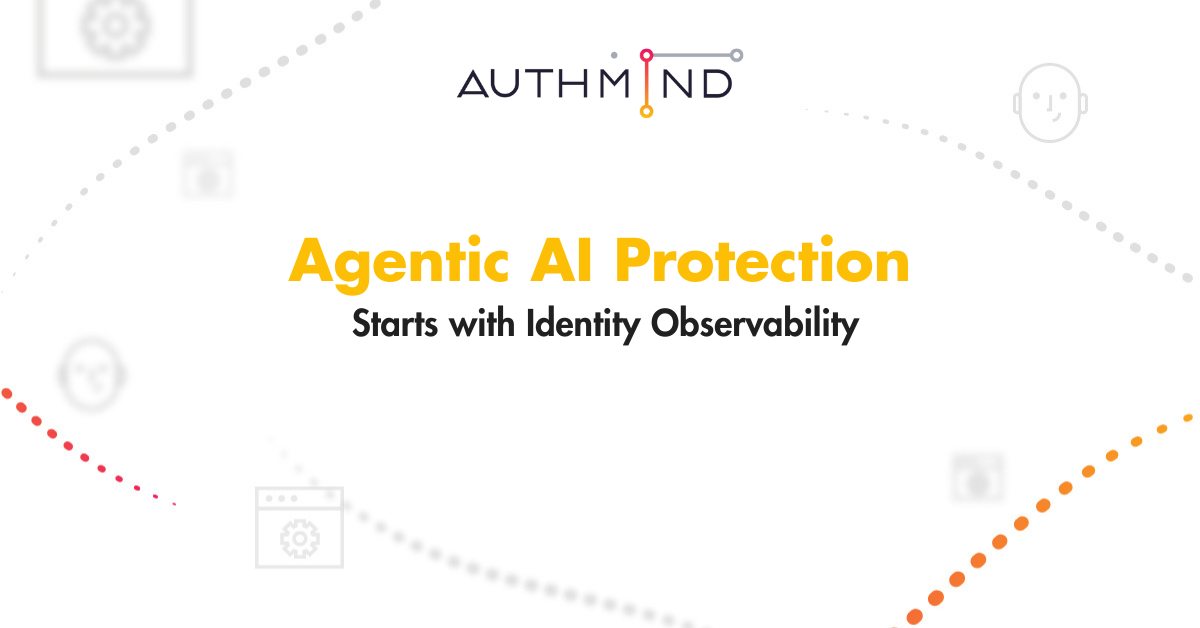- Aug 13
Agentic AI Protection Starts with Identity Observability
Updated: Aug 13

Agentic AI, autonomous systems are a new type of identity in our environments, capable of decision-making and proactive actions, is reshaping enterprise operations across a wide range of functions and sensitive corporate data, including sales, finance, HR, IT, and cybersecurity. AI agents are driving innovation and delivering efficiency gains by rapidly automating processes. But while the benefits are clear, the rapid rise of Agentic AI is introducing a new, widespread attack vector with new identity complexities that traditional Identity and Access Management (IAM) or Identity Governance Administration (IGA) tools were never designed to address.
Deloitte’s 2025 Technology Predictions report warns that in just two years, by 2027, 50% of companies using generative AI will deploy agentic solutions, driven by their ability to automate complex workflows across departments. And that speed clearly outpaces IT and security readiness.
With the introduction of Agentic AI organizations introduce multiple risks. These new autonomous identities operate with privileged access, make decisions, and take action without human oversight. If left unchecked or not properly configured, the AI agents can create unmanaged identities that fall outside of IAM frameworks, perform unintended actions, or access unauthorized data. Additionally, AI agents themselves can fall victim to cyber attack and be used for data exfiltration or ransomware deployment in our network, stemming from simple weaknesses like unchanged credentials or weak passwords and can extend to sophisticated attacks like prompt manipulation or injection
Another emerging and alarming risk is the lack of control over how AI tools are being accessed and used. Organizational employees are increasingly leveraging personal email addresses/identities to access AI systems, bypassing corporate security and IAM policies. By operating in this manner, these agents being used by our employees are essentially invisible browsers on endpoints, allowing them to circumvent IT controls. These rogue activities can easily go undetected by traditional security tools, IAM and even Zero Trust practices, which weren’t designed to monitor non-corporate logins or shadow access. This creates a significant risk by creating additional unknown or unmanaged identities, new attack paths, potential compliance violations, and the risk of data exfiltration, as sensitive corporate data could be accessed or transferred outside of approved channels.
By embracing AI for its significant transformative potential, whether within corporate security policies or not, organizations now face unprecedented security challenges. What can we do to address these challenges? When it comes to any problem this complex, it helps to start with the fundamentals. How can full visibility and observability of agentic AI activity be obtained?
The Role of Identity Observability in Achieving AI Governance and protection
Identity observability emerges as a vital component in securing agentic AI environments.
Tackling the first challenge, how does an organization even discover and consolidate its approved and unapproved AI agents? AuthMind’s Comprehensive Discovery allows organizations to discover any/all identities, whether managed or unmanaged. Our unique platform uses contextual monitoring of all identity-related activities and access flows to consolidate multiple accounts, even shadow, unknown, and personal identities into a single identity view, across any cloud of platform, offering a clear and actionable, and prioritized view for security teams.
AuthMind’s identity observability enables organizations to understand the "who, what, when, where, and why" of every action, including those performed by AI agents. This ensures the necessary context and historical tracking of actual steps and access flows made within the infrastructure, and with that continuously answer the question of how AI agents access the different systems and conduct their operations.
This capability is crucial for discovering and auditing AI agent actions, detecting anomalous behavior, mitigating potential risks, and rolling back potential mistakes. For example, if an AI agent suddenly starts accessing sensitive data or performing unauthorized transactions, identity observability can help flag these activities for investigation and map them back to the user who accessed or created that agent.
AuthMind’s Identity Observability Platform helps organizations get a handle on Agentic AI security by helping:
- Detect Agentic AI framework existence with Multi-layer detection approach
- Detect agentic AI framework existence, map the existence to specific identities (human, NHI and Agentic), determine if usage is within or bypassing security controls or permitted use, and detect unusual or unexpected AI agent activity over time.
- Detect users accessing Agentic AI and solve Identity Mapping Challenges
- Detect employees accessing approved or unapproved AI tools and if under the corporate security policies and controls
- Detect corporate employees using personal credentials to access AI tools. Map the same identity across any/all account types.
- Agentic AI Usage Monitoring
- Understand authorized agents performing unauthorized actions, users automating personal tasks in AI agents, and AI agents being connected to unapproved systems
- Map exact systems and other agents AI agents interacted with, and the security of those accesses.
- Agentic AI Detailed Behavioral Profiling
- Attain better activity patterns due to comprehensive network visibility, giving you the ability to detect when agents deviate from normal behavior
- Identify compromised agents vs compromised users
In essence, identity observability provides the critical insights to ensure that agentic AI operates within defined boundaries and in accordance with security policies. It provides the necessary context to understand if an agent is acting on its designated tasks or has been compromised. In this way, identity observability is not merely a security tool; it is an essential enabler of responsible and secure agentic AI adoption.
Request a Demo Today
See how AuthMind’s Identity Observability Platform helps organizations get a handle on Agentic AI security

